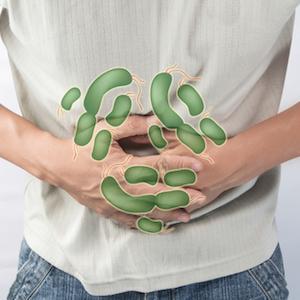With winter approaching, perhaps you or somebody you know will be unlucky enough to catch a nasty "stomach flu" or "24-hour flu," which will allow you to spend some quality time in the bathroom. And while you will almost certainly feel better within 24-72 hours, here's the catch: There's no such thing as the stomach/24-hour flu.
This widespread misconception stems from the fact that so many people don't understand what the flu actually is. The flu is caused by the influenza virus, different strains of which take on names such as H1N1 or H5N1. (Our own Dr Julianna LeMieux has eloquently explained these weird names.) The seasonal flu is a potentially serious infection for the very young and the very old, and according to the CDC, kills anywhere from a few thousand to nearly 50,000 Americans every year.
Unlike the so-called "stomach flu," the actual flu is not primarily characterized by vomiting and diarrhea (though it can occur). Instead, people generally feel achy and exhausted, like they got hit by a bus.
So, what does cause the vomiting and diarrhea that most people call "stomach flu"? Generally, there are two possibilities.
Norovirus. The norovirus, sometimes called "winter vomiting bug," has become nearly synonymous with "cruise ship outbreaks," though it can occur any place where food servers don't practice proper hygiene. The virus is so contagious that simply being around a sick person may be enough to get infected. The virus is also notoriously difficult to kill. Cruise ships must be thoroughly disinfected with bleach to make them safe again for passengers. The CDC estimates about 23 million norovirus infections occur in the U.S. each year, roughly one quarter of which are foodborne.
Food poisoning. If it's not norovirus, then "stomach flu" is probably some kind of food poisoning, which can be caused by more than 30 different pathogens. Some of these are linked to particular kinds of food, like unpasteurized dairy or undercooked eggs or meat. The CDC states that the five most common causes of food poisoning are norovirus, Salmonella, Clostridium perfringens, Campylobacter, and Staphylococcus aureus, which probably account for 91% of food poisoning cases.
The reason the CDC cannot give more precise numbers on food poisoning is because the available data is quite poor. Overall, about 48 million cases of food poisoning occur each year, but the CDC is only able to offer an educated guess as to the cause of 9 million of them. The rest are unknown.
The takeaways are: (1) There is no such thing as stomach/24-hour flu; (2) the average American has a 1 in 6 chance of getting food poisoning each year, which is mistakenly called "stomach flu"; and (3) the most likely cause is norovirus.
Source: "Burden of Foodborne Illness: Findings." Centers for Disease Control and Prevention. Page accessed: 3-Nov-2016.




